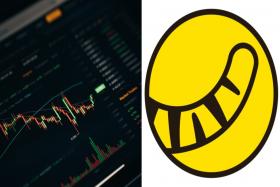STI stuck within trading range
One phrase keeps cropping up in recent broker assessments of the outlook for the Straits Times Index (STI) - it looks "stuck within a trading range". Loosely, this range spans the region just below 3,200 up to around 3,280; the former - to employ technical jargon - being where the support lies and the latter being the resistance level.
Those who place their faith in fundamentals over technicals might scoff at using charts to divine what the future might hold but there is no denying that players have been buying the dips and selling into strength for several weeks now - which when you think about it, does amount to the market being stuck in a trading range.
The $64,000 question, of course, is: What might prompt a breakout from this range?
Given that the index started the year at 2,880 and reached a 2017 high of 3,271 less than five months later on May 11 to post a very creditable gain of 14 per cent, the conclusion would reasonably be that the odds of a move downwards from here onwards are greater than upwards. If so, then it makes sense to take some money off the table for now.
This in turn suggests that investors should trade cautiously from here on, a suggestion that receives some backing in a property report by Maybank Kim Eng last Friday which said that after a trip to Hong Kong, it found that investors there were reluctant to commit too heavily in developer stocks given the latter's fine run this year.
This is understandable - according to the Singapore Exchange's investor education portal My Gateway on Friday, the SGX Real Estate Index has posted a solid 19.5 per cent return this year.
(Interestingly, My Gateway also reported that even after this rise, "sector valuations remain below their long-term historical average", adding: "Singapore property developer stocks are trading at price/book ratio of 0.75x versus their long-term average of 0.83x.")
This in turn brings up a second common feature of broker reports about stocks: Although economies are growing and so there is some justification for being invested in equities, valuations are very high. The corollary of this is that there is a growing chance that prices are outstripping the fundamentals, and something will eventually have to give.
Wall Street's wobbles of late suggest that caution has also crept into the minds of investors there - not so much because of interest rate worries as is claimed, but more likely because upward momentum has stalled; and this is prompting players to take stock of what the outlook holds.
Stated differently, although some reports cite a hawkish Federal Reserve as a reason for Wall Street's behaviour now, it is more probable that observers are coming round to the idea that the rally cannot go on indefinitely and are looking to justify the recent volatility by pointing to interest rate worries, perhaps as a convenient scapegoat.
To be honest, it is difficult to understand why interest rates should suddenly be a worry because the federal funds futures market is presently pricing a zero chance of a rate hike at July's Federal Open Market Committee meeting and only a 22 per cent chance of a hike in September.
Furthermore, Friday's bounce came after better-than-expected jobs numbers that, taken to its logical conclusion, indicates more interest rate hikes on the horizon and should have placed pressure on stocks instead of pushing prices up.
This article appears in The Business Times today. For full listings of SGX prices, go to http://btd.sg/BTmkts
Get The New Paper on your phone with the free TNP app. Download from the Apple App Store or Google Play Store now


